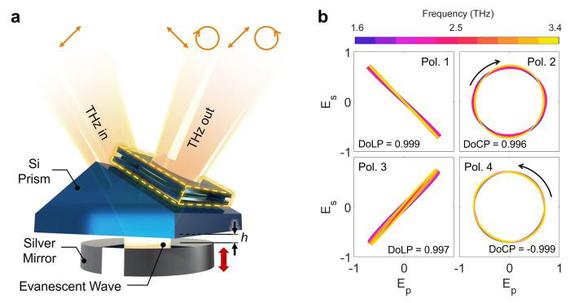(ECNS) -- Chinese researchers have achieved high-precision modulation of ultra-wideband transmissive terahertz polarization, the Aerospace Information Research Institute of the Chinese Academy of Sciences announced on Wednesday.

This technological breakthrough will facilitate the development of multiple fields including next-generation wireless communication and non-destructive examination of cultural relics. It will also play a unique role in terms of electronic information, culture heritage, and health.
According to Chen Xuequan, a researcher at the Aerospace Information Research Institute, accurate control of the polarization state of terahertz waves is extremely challenging due to their large bandwidth and short wavelength.
However, the research team has overcome this difficulty by adjusting two key parameters of the polarization modulator: the distance between the metal mirror and prism, and the birefringence of liquid crystals.
The newly developed terahertz wave polarization modulator outperforms other existing models, offering enhanced multifunctionality, a broader operating bandwidth, and high-precision control.
Terahertz waves, which occupy the spectral region between millimeter waves and infrared light, are characterized by broad bandwidth and strong penetration capabilities, making them highly promising for applications in next-generation wireless communications, material testing, and bio-medicine.
The research was jointly completed by the Aerospace Information Research Institute and Nanjing University. Its results have been published in the international academic journal Optica.


















































 京公网安备 11010202009201号
京公网安备 11010202009201号